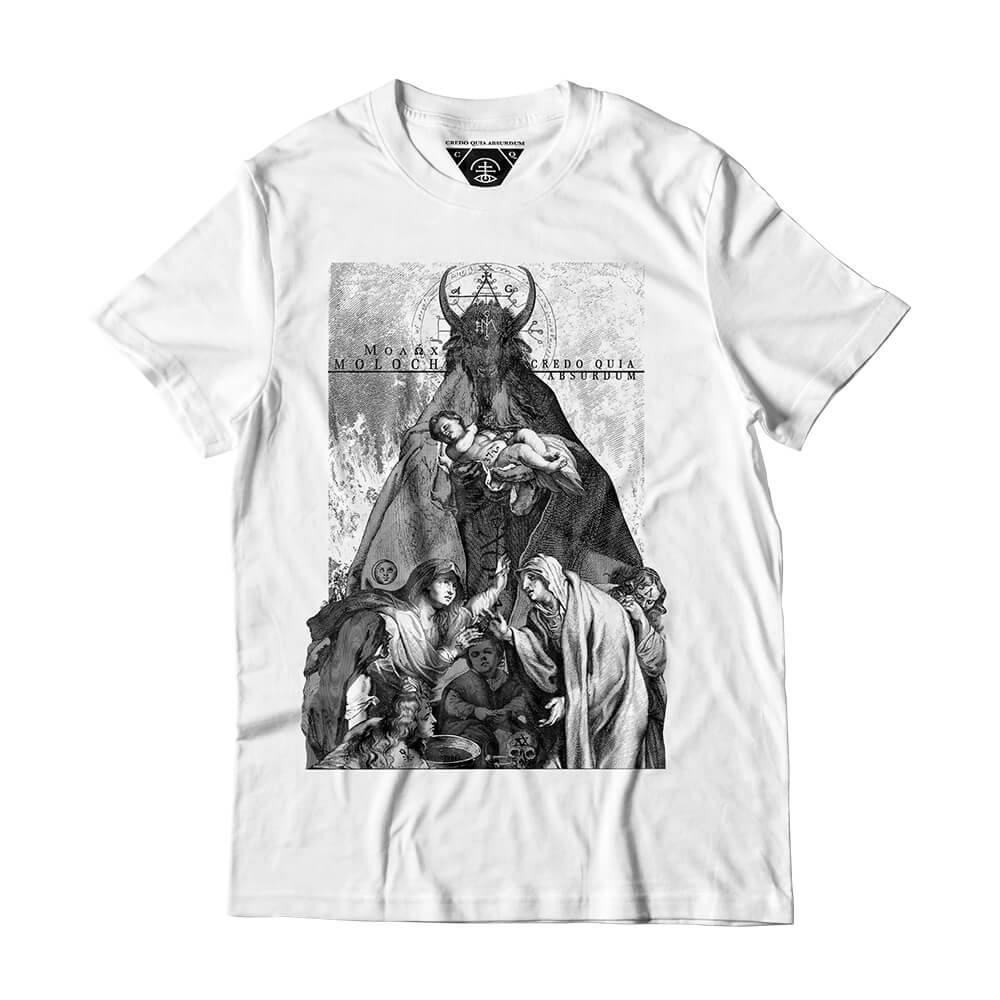The concept of “sacrifice” seems to be a common theme to the four designs released in late January (2021). It was completely unintentional but it makes us think that maybe the times we live now have something to do with it.
The “Moloch” or “Molech” is said to be an ancient god (allegedly worshiped by the Amonites) that became very popular in the Old Testament, because of the disturbing sacrifices required by this deity. The most common rituals usually involved the immolation of small children, while the participants danced and made orgies. Moloch’s was visually portrayed by a man with bovine head, sometimes holding a child. He is often represented as a huge bronze statue with (seven) burning chambers.
“The idols of Moloch (and Chamos) were murderous machines which sometimes crushed unfortunate little children against their brazen breasts and sometimes consumed them in heir red-hot arms. There was dancing to the sound of trumpets and tambourines, so that the cries of the victims were stifled, and these dances were led by the wretched mothers. Incest, sodomy and bestiality were the authorised practices among these infamous people, and even formed part of the sacred rites. “ The History of Magic, Eliphas Lévi, 1860.



There are divergences about who Moloch really is, some consider him as a demon that presides a black mass (similar to the witches’ sabbath) of blasphemy and human sacrifice. Others describe him simply as a fertility god (horned gods have a straight relation with the earth) to which sacrifices were made in a similar way to the druids. We may need to understand that the historical/geographical context may have a major influence on this kind of rites.
For the people who lived in specially sterile areas, their dependence on the agriculture may lead them to desperately ask for divine favours. When an animal sacrifice has no sufficient power, a human take its place for the survival of the entire community. In rare cases, these kind of practices follow perverse demonic celebrations. In the Bible, it was believed that the cult of Moloch was one of these cases – but we’re aware that some biblical texts are pure religious propaganda.
In our design, the composition suggests a ritualistic ceremony. The main figure, Moloch, appears as a gigantic minister that receives the ultimate sacrifice.
Unlike the original depictions, the bovine god wears a cloak that resembles the christian priesthood (we let you have your own conclusions about it).
The women at the bottom seem to prepare a new offering to Moloch. None of them appears to be happy in this bizarre practice, and that supports the idea that the cults were not as wicked as many people describe. You can easily see that the faces of all female participants, as mothers, show a deep kind of despair and pain.
Symbolically speaking, Moloch may be seen as a god of transformation. To give our (symbolic) children to sacrifice is to give up of an extremely important part of us, in order to evolve into a new improved being. As the alchemical Calcination, one must purify himself, finding his essential core to have a better knowledge of oneself.


 No products in the cart.
No products in the cart. 